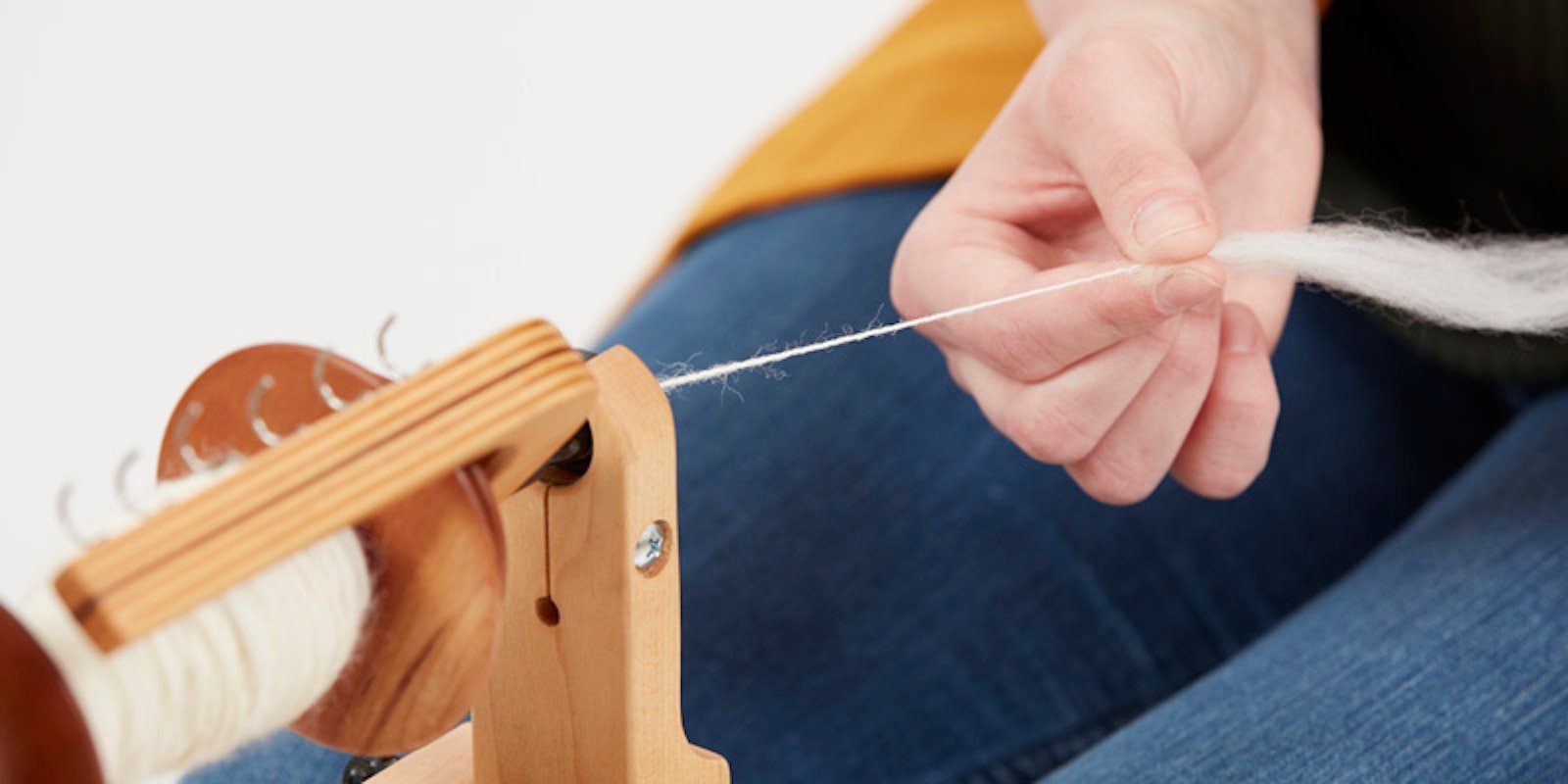Meeting the Spinning Wheel
My first spinning lesson was on a Monday. In preparation, I took home a castle spinning wheel from the office for the weekend. I felt humbled by its presence—and a bit intimidated, to be honest. I also took home Maggie Casey’s book, Start Spinning: Everything You Need to Know to Make Great Yarn, and corresponding video. Totally unfamiliar with the wheel and all of its parts, I spent some time watching the video, looking through the book, and acquainting myself with the treadles. I worked to establish a rhythm of spinning the wheel with my feet, and though it took some time to be able to keep the wheel spinning clockwise, I eventually learned to do so without focusing too much on footwork.
Adding the Fiber
On Monday, however, when I added my hands to the mix, it was a different story entirely. My instructor, Elizabeth Prose, the Assistant Editor of Spin Off, began by showing me a few basics. First, she showed me the different parts of the spinning wheel while oiling it up. Next came a lesson on the short forward draw technique. I knew that predrafting could be a good idea for beginners, so I started to draw out the fiber a bit. When I actually tried drafting the fiber while treadling, it felt like trying to pat my head and rub my stomach at the same time. Every time Elizabeth offered a word of advice, I got distracted and lost my footing. Finally, after what felt like a million failed attempts, my hands adjusted to the back-and-forth drawing motion and my feet moved accordingly. For about one whole minute, I was making handspun yarn! It was lumpy and uneven, but it was yarn! When a lump was too large to fit through the orifice, I had to stop to adjust and start again.
Every spinner I’ve met has said to keep your first bit of yarn. This piece has found a forever home hanging on the wall of my cubicle.
Finding the Rhythm
But at home that night with the wheel in tow, I found it difficult to get the yarn started again: it wouldn't feed onto the bobbin. The next day Elizabeth helped me fix my feed issue. I realized my death-grip pinch on the yarn caused trouble, so when I drew my fingers back to draft more fiber, it bunched up.
Elizabeth had said in our first lesson: “Spinning is supposed to be relaxing.” At first, that seemed impossible. But as I relaxed my hands, the rest of my body followed, and I fell into the rhythm of spinning yarn. Watching the bobbin fill up with my creation proved immensely satisfying, and after three days with the wheel, I was finally making handspun yarn on my own. It was imperfect yarn, but yarn nonetheless.
Watching my yarn fill up the bobbin is my favorite part of spinning so far.
Follow me on my spinning journey and find out if I can ever spin consistent yarn in next week’s post.



